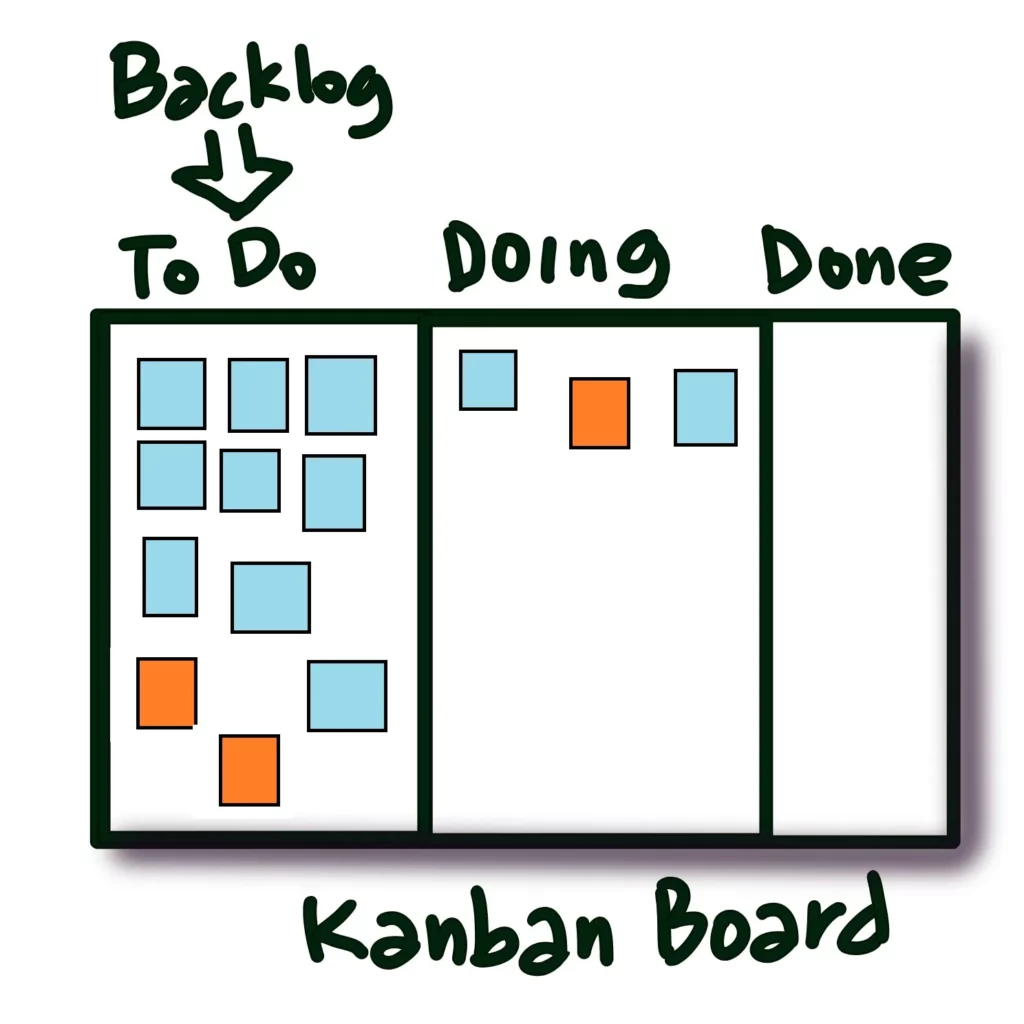
EDIT:
After publishing this post I thought it is important to add some more info to this related topic: Multitasking
[Multitasking is actually task switching in disguise. When you try to do two things at once—like checking your email during a meeting—you’re actually jumping between those two tasks at lightning speed. Task switching takes precious mental effort, meaning you’re likely to make more errors and get less done. In this article, we address common multitasking myths and what to do instead.] (Source: Asana)
I heard it already often from team members saying: „I don’t have a problem with switching contexts, everyone can approach me at any time“. How time-consuming this in reality is, you can see in the video with Hendrik Kniberg where he demonstrates flow states. If you know a cool game/exercise how we can experience it, please let me know.
[FLOW, particularly in the context of Kanban and agile methodologies, refers to the optimal state of work progress where tasks move smoothly and efficiently through the workflow without unnecessary delays or bottlenecks. When individuals or teams are in a state of flow, they are fully immersed and focused on their work, achieving a balance between challenge and skill that leads to heightened productivity and satisfaction. Flow is characterized by a sense of effortless concentration, deep engagement, and a loss of awareness of time and external distractions.]
Metrics in agile methodologies often carry a stigma of disapproval. However, this perception is not entirely accurate. The acceptability of metrics largely hinges on their context and application. While many metrics are relevant only within a specific team, it’s crucial to avoid pitting teams against each other based on these metrics—a lesson learned from past experiences.
What metrics are available?
The concept of „flow“ and its associated metrics originate from Kanban:
- Work in Progress (WIP): This encompasses all ongoing tasks—those that have been initiated but not yet completed.
- Throughput: It measures the number of work items a team or manager can finalize within a given timeframe.
- Cycle Time: This metric gauges the duration required to deliver value, often observed as a trend over time.
- Aging: It reflects the duration a piece of work has been in progress.
Although these flow metrics operate independently, they generate interactions and dynamics that significantly influence the workflow of teams and managers.
In this article, Johanna Rothmann goes into detail about where and how flow metrics can be used reasonably. At the team level and also for the Dysfunction Mapping which is a great tool to feed the discussion outside team and with management. This is one of my tools in my imaginary toolbox I use with the Michaels‘ Dysfunction Mapping.
READ ON –> Flow Metrics and Why They Matter to Teams and Managers
Please have a look at this great video where Henrik Kniberg explains FLOW:
Henrik Kniberg : Multiple WIP vs One Piece Flow Example
Schreibe einen Kommentar